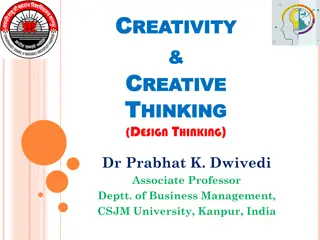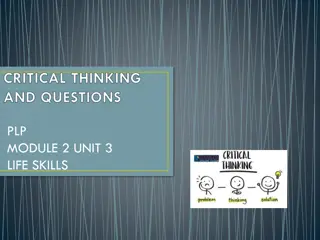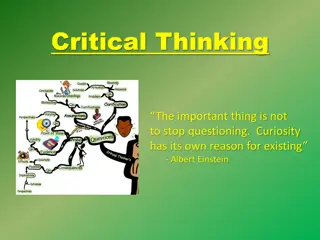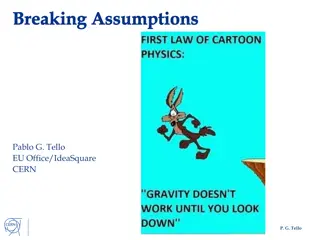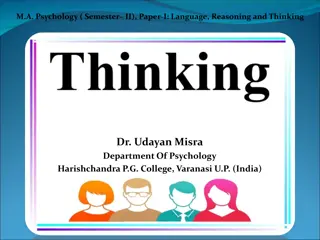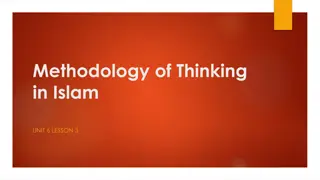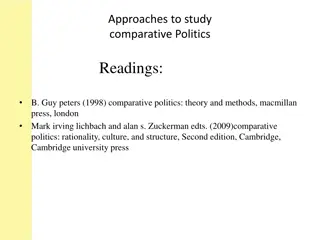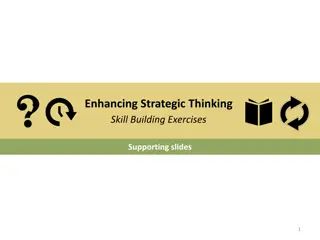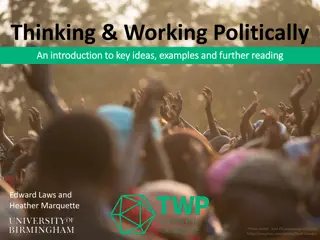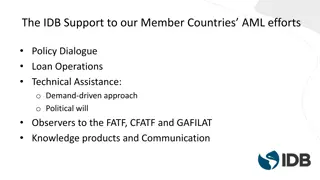Thinking and Working Politically: New Approaches in Development
Developmental change is fundamentally political, with a growing body of evidence showing that ODA failures are largely due to poor adaptation to politics and local interests. Mainstream ODA is slowly shifting towards more politically informed approaches such as Thinking and Working Politically (TWP), moving from traditional, apolitical aid practices to adaptive and contextually sensitive strategies. This evolution involves contestation between factions, informal coalitions, resistance by established actors, and elite support for change. TWP emphasizes the importance of understanding and engaging with political dynamics to drive effective development outcomes.
Download Presentation

Please find below an Image/Link to download the presentation.
The content on the website is provided AS IS for your information and personal use only. It may not be sold, licensed, or shared on other websites without obtaining consent from the author.If you encounter any issues during the download, it is possible that the publisher has removed the file from their server.
You are allowed to download the files provided on this website for personal or commercial use, subject to the condition that they are used lawfully. All files are the property of their respective owners.
The content on the website is provided AS IS for your information and personal use only. It may not be sold, licensed, or shared on other websites without obtaining consent from the author.
E N D
Presentation Transcript
Thinking and working politically Graham Teskey Graham Teskey Ministry of Foreign Affairs and Trade Wellington August 7th, 2019
Two starting points for 12 slides This is work in progress: there is as yet no definitive or unequivocal way of how to do TWP Want to test the framework against your experience Abt Associates | pg 2
The case for TWP in one picture Abt Associates | pg 3
The case for these new approaches in words Developmental change is fundamentally political Growing body of evidence that failures of ODA largely due to poor understanding of politics, and inability to adapt to politics and local interests Traditional aid attempts to be apolitical, focusing on technical knowledge transfer, capacity strengthening, and funding gaps When real change happens, it usually involved: Contestation between factions, producing winners and losers Informal coalitions of groups with shared interests combining forces Resistance by entrenched actors, benefitting from the status quo Elites or powerful actors, pursuing their own interests, supporting the change Despite evidence, mainstream ODA only now beginning to change Abt Associates | pg 4
From linear to adaptive Abt Associates | pg 5
DDD, TWP. PDIA and AM Abt Associates | pg 6
The TWP bit of the Log Frame Narrative Summary OVI Source Assumptions ( if then ) Impact Explicitly taking these assumptions on board is what makes TWP different Outcome Outputs Activities Abt Associates | pg 7
Three stages in the program cycle where TWP matters Selection Design Implementation Abt Associates | pg 8
Implementation: delivering activities (how are we doing on physical progress?) Monitoring: the regular and frequent checking of progress towards achieving outputs (are we on track against the plan, the budget and most importantly against outputs and possibly outcomes?) Learning: our reflexive questioning of progress - what are we learning about translating inputs and activities into outputs and outcomes (what is working and what isn t?) Adapting: revising our implementation plan, adding unforeseen activities and dropping others, changing the balance of inputs, be they cash, people or events etc. (how are we changing the plan?). Abt Associates | pg 9
Thinking Thinking Working Working Selection Selection What is the problem? Whose problem is it? Who decided it was worth working on? Is there a clear technical solution? To what extent is this politically feasible? Design Design Articulate assumption and translate them into activities How much space between the Problem and the Goal? Structures must be designed simultaneously to: deliver (implement), monitor, learn and adapt Implementation Implementation Flexibility Flexibility ? Increase spending and budget in year ? Decrease spending or budget in year ? Increase pace of implementation ? Decrease pace of implementation Adaptation Adaptation ? Change articulation of Outputs ? Add new Activities ? Drop Activities ? Revise milestones ? Revise the ToC Responsiveness Responsiveness ? To policy changes of funder ? To policy changes of host government ? To sudden and major political, economic or social events (Nepal going federal is a good example) Abt Associates | pg 10
Flexible? Adaptive? Responsive? KOMPAK KOMPAK Indonesia, Indonesia, DFAT DFAT Budgets increased and decreased at both DFAT and program request Some evidence of speed up / slow down (pragmatic) Little evidence regarding in-year design changes New Activities added in next AWPB; not in- year Strong - to GoI and DFAT priority needs Some evidence of responding to changing local circumstances and context PNG PNG Governance Governance Partnership, Partnership, DFAT DFAT Little flexibility in first two years Some program budget virements at year s end to meet DFAT spending needs Little evidence to date of in-year adaptation to local policy circumstances No new in year Activities Overwhelmingly to DFAT priorities, esp. Minister Yes to major GoPNG policy shifts Timor PHD Timor PHD DFAT DFAT Limited due to volume of funds committed to legacy programs Evidence of some change in new AWPBs To DFAT strong; some emerging evidence of responsiveness to GoTL Health Health Sector Sector Support, Support, Nepal, DFID Nepal, DFID Yes at specified points e.g. MTR Some evidence that contractors responding in year on agreed Activities Yes to DFID and GoN and especially to federalism (no choice!) Abt Associates | pg 11
A spectrum Abt Associates | pg 12
Big lessons More thinking needed at selection How much space for flexibility at design stage? Design in assumptions ToA should not masquerade as a ToC Structure teams appropriately with a mix of skills Regular / frequent interrogation Clear rules of the game (authorizing environment, delegation etc) Abt Associates | pg 13


